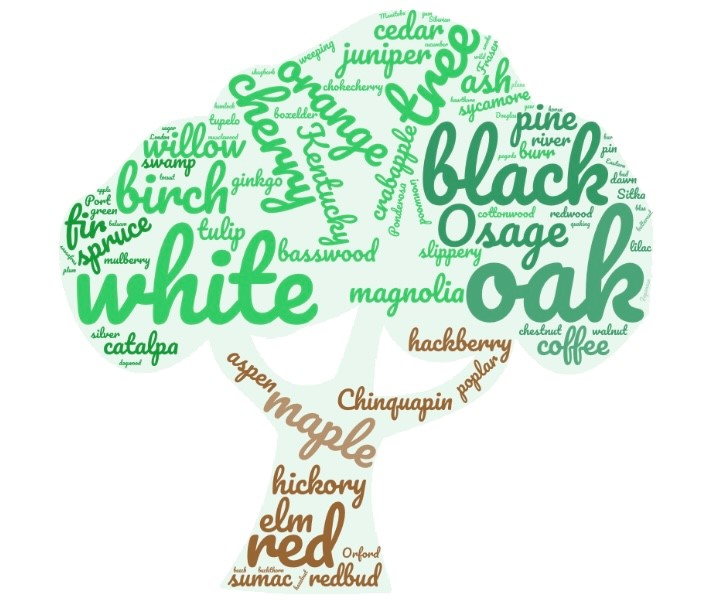By Patricia Lindquist, DNR Urban Forestry Communications Specialist, patricia.lindquist@wisconsin.gov, 608-843-6248
 “What kind of tree should I plant?” We are often asked that question as urban foresters. For me, the first thing that comes to mind is, “not a maple!”
“What kind of tree should I plant?” We are often asked that question as urban foresters. For me, the first thing that comes to mind is, “not a maple!”
Approximately 36% of trees in the Wisconsin Community Tree Map are maples.* Why is this a bad thing? All it takes is a pest like the emerald ash borer (EAB) or a disease like Dutch elm disease that targets maples, and suddenly, one-third of the urban canopy is destroyed.
By planting smaller quantities of many different species, we create a more resilient urban forest less affected by any single threat.
The Wisconsin Department of Natural Resources (DNR) recommends planting no more than 10% of a genus (for example, maples or oaks) and 5% of a species (such as sugar maples or bur oaks). Most Wisconsin communities are far from meeting those targets.
According to “Trees in Your Community,” a 2018 report by the DNR, “on average, the most common tree in a community accounts for 27.5% of a community’s public tree population, the top two trees account for 41.1% and the top six tree species account for 64.7% of the public tree population.”
We can do better. The Cambridge Tree Project, a nonprofit in Cambridge, Wisconsin, is a shining example of what can be accomplished with a commitment to species diversity. In 2004, 70% of Cambridge’s public trees were ash and maple, and there were 35 different species.
As of 2020, only 17% of Cambridge’s public trees are ash and maple, and there are 164 species. Here is a list of Cambridge’s species.
Let’s return to our original question: what should I plant? You might want to start by looking at the Wisconsin Community Tree Map to see what’s planted in your local urban forest. Note which trees are most common and set a goal to plant something different.
Not all communities currently have data uploaded to the map. In that case, it’s helpful to know which trees are most common in Wisconsin’s urban forests overall. The top four genera are maples, ashes, honeylocusts and lindens. Please plant something else.
Your next step should be to consider the characteristics of your planting site. Which hardiness zone do you live in? How much space do you have? What is your soil like?
If you’re planting a tree in the middle of a large lawn that’s green without supplemental water and feels spongy when you walk on it, your soil should be able to support many different types of trees. But if the soil is hard and not much is growing there, you’ll need to select a tree that can survive those harsher conditions.
To learn more about selecting the right tree for your site conditions, check out this UW-Madison, Division of Extension publication.
After considering your site conditions, you can start narrowing down the list of species that will thrive there. An online species selector such as the Morton Arboretum can be a big help here.
You can select the type of soil you have and any unique characteristics you want, such as fragrant flowers or beautiful fall colors. It’s a good idea to make a list of several species that could work for your location since it may be challenging to find some of these trees in your local nursery.
Once you bring your new tree home, please plant it correctly and take good care of it. This webpage has resources for planting.
Approximately 80% of urban and community forests are privately owned, which means that homeowners’ species choices significantly impact our forests. Your choices make a difference.
*Based on trees incorporated into the Wisconsin Community Tree Map (pg-cloud.com/wisconsin), 2018. These are mostly street trees and do not represent all trees in a community.
